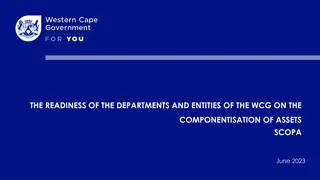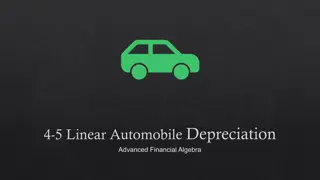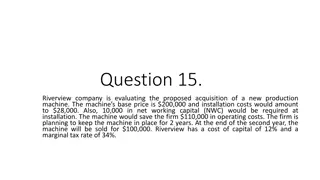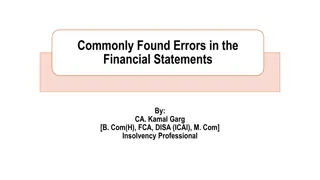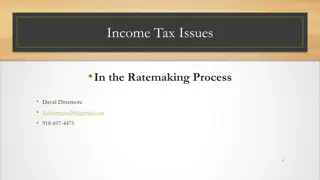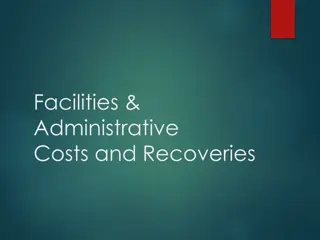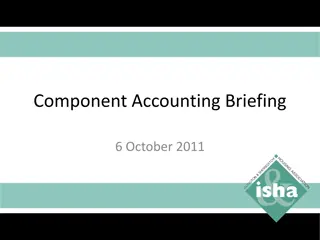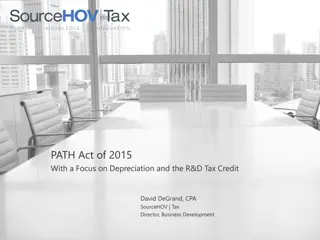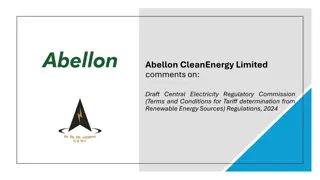
Depreciation in Business Assets
Depreciation is a gradual decrease in the value of fixed assets over time, impacting financial statements and tax calculations. Learn about the concept, calculation methods, and importance of depreciation in business operations.
Download Presentation

Please find below an Image/Link to download the presentation.
The content on the website is provided AS IS for your information and personal use only. It may not be sold, licensed, or shared on other websites without obtaining consent from the author. If you encounter any issues during the download, it is possible that the publisher has removed the file from their server.
You are allowed to download the files provided on this website for personal or commercial use, subject to the condition that they are used lawfully. All files are the property of their respective owners.
The content on the website is provided AS IS for your information and personal use only. It may not be sold, licensed, or shared on other websites without obtaining consent from the author.
E N D
Presentation Transcript
DEPRECIATION Depreciation may be described as a permanent, continuing and gradual shrinkage in the book value of fixed assets. It is based on the cost of assets consumed in a business and not on its market value. According to Institute of Cost and Management Accounting, London (ICMA) terminology The depreciation is the diminution in intrinsic value of the asset due to use and/or lapse of time. Accounting Standard-6 issued by The Institute of Chartered Accountants of India (ICAI) defines depreciation as a measure of the wearing out, consumption or other loss of value of depreciable asset arising from use, effluxion of time or obsolescence through technology and market-change. Depreciation is allocated so as to charge fair proportion of depreciable amount in each accounting period during the expected useful life of the asset. Depreciation includes amortization of assets whose useful life is pre-determined .
DEPRECIATION Depreciation has a significant effect in determining and presenting the financial position and results of operations of an enterprise. Depreciation is charged in each accounting period by reference to the extent of the depreciable amount. It should be noted that the subject matter of depreciation, or its base, are depreciable assets which: are expected to be used during more than one accounting period; have a limited useful life; and are held by an enterprise for use in production or supply of goods and services, for rental to others, or for administrative purposes and not for the purpose of sale in the ordinary course of business. Examples of depreciable assets are machines, plants, furnitures, buildings, computers, trucks, vans, equipments, etc. Moreover, depreciation is the allocation of depreciable amount , which is the historical cost , or other amount substituted for historical cost less estimated salvage value. Another point in the allocation of depreciable amount is the expected useful life of an asset. It has been described as either (i) the period over which a depreciable asset is expected to the used by the enterprise, or (ii) the number of production of similar units expected to be obtained from the use of the asset by the enterprise.
FEATURES OF DEPRECIATION 1. It is decline in the book value of fixed assets. 2. It includes loss of value due to effluxion of time, usage or obsolescence. For example, a business firm buys a machine for Rs. 1,00,000 on April 01, 2017. In the year 2017, a new version of the machine arrives in the market. As a result, the machine bought by the business firm becomes outdated. The resultant decline in the value of old machine is caused by obsolescence. 3. It is a continuing process. 4. It is an expired cost and hence must be deducted before calculating taxable profits. For example, if profit before depreciation and tax is Rs. 50,000, and depreciation is Rs. 10,000; profit before tax will be: Profit before depreciation & tax 50,000 (-) Depreciation (10,000)= Profit before tax 40,000 5. It is a non-cash expense. It does not involve any cash outflow. It is the process of writing-off the capital expenditure already incurred.


